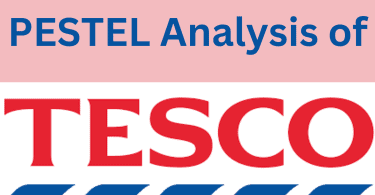The global food and beverage industry is a dynamic and unpredictable arena where change is the only constant. As a significant player, Tim Hortons must contend with many external forces, from volatile market conditions to evolving consumer behaviors and stringent regulatory demands.
These factors can create opportunities or pose significant risks, making the business environment increasingly complex and challenging to understand.
Unexpected shifts in economic stability, political regulations, and technological innovations can disrupt even the most well-established brands.
Furthermore, the growing emphasis on sustainability and ethical practices adds another layer of complexity to operational strategies. Tim Hortons must remain vigilant and agile to respond effectively to these external pressures.
To gain a comprehensive understanding of these influences, the PESTEL model offers a structured approach. Breaking down the Political, Economic, Social, Technological, Environmental, and Legal factors impacting the industry helps companies like Tim Hortons make informed decisions and build robust strategies for future growth.
Tim Hortons overview

History
Tim Hortons, a beloved Canadian institution, was founded in 1964 by Tim Horton, a former professional hockey player, and Ron Joyce, a retired police officer.
The first restaurant opened in Hamilton, Ontario, and quickly gained popularity for its freshly brewed coffee and made-from-scratch doughnuts.
Activities
Tim Hortons is a quick-service restaurant chain that specializes in coffee, baked goods, and breakfast sandwiches. Its menu includes lunch items such as soups, sandwiches, and wraps.
The company is renowned for its iconic Timbits (mini doughnuts) and its commitment to providing a welcoming atmosphere for its customers.
Competitors
Tim Hortons faces stiff competition from other major coffee chains, including:
- Starbucks: A global coffee giant known for its premium coffee and diverse menu.
- Dunking Donuts: Another famous coffee and doughnut chain with a strong presence in the United States.
- McDonald’s: A fast-food giant that has expanded its coffee offerings in recent years.
- Second Cup: A Canadian coffee chain that competes directly with Tim Hortons in the domestic market.
Suppliers
Tim Hortons relies on a network of suppliers to provide essential ingredients and products, including:
- Coffee beans: The company sources coffee beans from various regions worldwide to ensure a consistent quality product.
- Dairy products: Tim Hortons uses local suppliers’ milk, cream, and butter.
- Baked goods: The company partners with suppliers to provide a variety of doughnuts, muffins, and other pastries.
- Paper products: Tim Hortons uses disposable cups, plates, and napkins from suppliers.
Customers
Tim Hortons primarily targets a broad range of customers, including:
- Daily commuters: Many rely on Tim Hortons for their morning coffee and breakfast.
- Families: Tim Hortons offers a variety of family-friendly menu items.
- Students: The chain’s convenient locations and affordable prices make it popular.
- Office workers: Tim Hortons is a popular destination for workers seeking a quick caffeine fix.
Strategies
Tim Hortons has implemented several strategies to maintain its competitive edge:
- Expansion: The company has expanded its domestic and international operations, opening new restaurants in various markets.
- Innovation: Tim Hortons has introduced new menu items and limited-time offers to keep customers engaged.
- Technology: The company has embraced technology, offering mobile ordering and loyalty programs.
- Community involvement: Tim Hortons is actively involved in community initiatives and supports various charitable causes.
Key Figures
As of 2023, Tim Hortons:
- Operates over 5,000 restaurants worldwide.
- Has a significant presence in Canada, the United States, and other countries.
- Generates billions of dollars in annual revenue.
- Employs tens of thousands of people.
PESTEL analysis of Tim Hortons
We now turn to the results of Tim Hortons PESTEL analysis:
Political factors
To conduct a comprehensive PESTEL analysis of Tim Hortons in 2024, we will start by evaluating the political factors that could influence its growth and performance in the Canadian market and internationally.
Political elements involve the interplay between government policies, regulations, and the broader political context, which can directly and indirectly impact a company’s operations.
Government Regulations and Policies:
Food and Beverage Regulations:
Tim Hortons must comply with strict health and safety regulations related to food production, storage, and distribution in Canada and other markets like the U.S.
In 2024, any changes in these regulations, especially concerning ingredient disclosure, sugar content, or sustainable packaging requirements, could directly impact their product offerings and operational costs.
Minimum Wage and Labor Laws:
Minimum wage policies continue to evolve in Canada. Changes in provincial minimum wage laws (e.g., Ontario’s decision to raise the minimum wage or changes in Alberta’s labor policies) can increase operational costs, affecting profitability.
This is crucial for Tim Hortons as much of its workforce comprises hourly-wage employees.
Immigration Policies:
Tim Hortons relies heavily on a diverse workforce, including temporary foreign workers, particularly in rural and remote locations. Any tightening of immigration policies could result in a shortage of available labor, impacting service levels and expansion plans.
Trade Relations and Cross-Border Operations:
Impact of Canada-U.S. Trade Relations:
Given that Tim Hortons has expanded its presence in the U.S., the political dynamics between Canada and the U.S. play a crucial role in the company’s cross-border operations. Tariffs, trade agreements like the USMCA, and import/export restrictions on food ingredients can influence the pricing and availability of products.
International Expansion and Trade Agreements:
If Tim Hortons seeks further international expansion in 2024, it must maneuver the complexities of local trade agreements and regulations in new markets.
For example, entry into the EU or Asian markets could present regulatory challenges related to food standards, taxation, and local employment laws.
Political Stability and Public Sentiment:
Canadian Political Climate:
Political stability in Canada generally provides a conducive environment for business. However, public sentiment towards large corporations, especially in light of social issues or controversies, can significantly impact the brand’s reputation.
This was previously evident when franchisees and the corporate office were at odds over wage increases and employee benefits, leading to public backlash.
Government Support and Incentives:
The Canadian government has shown interest in supporting small and medium-sized businesses through various tax incentives and grants, which can indirectly benefit Tim Hortons franchisees.
However, any shifts in these support programs could influence the financial performance of individual franchise owners.
Food Labeling and Sustainability Legislation:
The Canadian government is actively pursuing sustainability goals that align with international agreements like the Paris Climate Accord. In 2024, new legislation could exist around food labeling (e.g., calorie counts), sustainable sourcing, or carbon footprint disclosures.
Tim Hortons may need to adapt its menu or supply chain practices to align with these regulations, incurring additional compliance costs.
Environmental and Climate Change Policies:
The government’s stance on reducing carbon emissions and promoting sustainable practices may lead to stricter regulations in the food industry.
Tim Hortons might face pressure to invest in greener practices, such as reducing plastic use, adopting renewable energy in operations, or partnering with environmentally conscious suppliers.
Public Health Campaigns and Policy Changes:
Health and Nutrition Policies:
In 2024, the Canadian government may introduce policies targeting obesity, diabetes, and other health-related issues, which could influence public perception and demand for Tim Hortons’ products.
Initiatives such as limiting marketing of high-calorie foods to children, mandating health warnings, or promoting healthier food choices could push Tim Hortons to reformulate menu items or introduce new products.
Pandemic-Related Regulations:
Although the worst COVID-19 pandemic has passed, residual regulatory changes related to health standards, hygiene practices, and employee safety in the food service industry are still relevant. Tim Hortons must comply with these regulations to avoid penalties and maintain its reputation.
Franchisee Relations and Policy Impact:
Tim Hortons operates mainly through a franchising model, and any policy changes or disputes between the corporate office and franchisees can have political ramifications.
For instance, changes in franchise agreements or government intervention in franchise disputes (as seen in the past) can impact business operations and brand perception.
To recap, Tim Hortons must closely monitor and adapt to changes in the political environment to mitigate risks and leverage opportunities for sustainable growth and performance in 2024 and beyond.
From labor policies to international trade agreements, political factors will shape its strategic decisions and operational efficiency.
Economic factors
Economic Growth and Consumer Spending Power:
Canadian Economic Outlook:
The Canadian economy has shown signs of recovery and stabilization post-COVID-19, but uncertainty remains. Factors such as GDP growth, employment rates, and inflation will directly influence consumer spending power.
As a Quick Service Restaurant (QSR) brand, Tim Hortons’ revenue is closely tied to discretionary spending. Any slowdown in economic growth could reduce consumer spending on non-essential items like premium coffee and specialty menu items.
U.S. and Global Economic Trends:
Given Tim Hortons’ presence in the U.S. and plans for potential international expansion, global economic trends like changes in the U.S. Federal Reserve’s interest rates or economic slowdowns in significant economies could affect the company’s international sales and profitability.
Inflation and Food Prices:
Rising Ingredient Costs:
In 2024, inflationary pressures on food prices are still prevalent due to supply chain disruptions, geopolitical conflicts, and rising energy costs.
Tim Hortons relies on commodities like coffee, dairy, and grains, whose prices are highly susceptible to global market fluctuations. Increased input costs could lead to reduced margins if the brand cannot pass these costs onto consumers.
Price Elasticity and Consumer Response:
If inflation continues to push up food prices, Tim Hortons will need to balance price adjustments to maintain profitability without alienating price-sensitive customers.
More reliance on price hikes can reduce customer frequency, especially in economically stressed regions.
Exchange Rate Fluctuations:
Impact on Cross-Border Trade:
Tim Hortons imports several raw materials and operates in the U.S. market, making it vulnerable to fluctuations in the exchange rate between the Canadian dollar (CAD) and the U.S. dollar (USD).
A weaker CAD can increase the cost of imports, affecting ingredient costs, while a stronger CAD could make exports less competitive.
This could impact overall profitability, necessitating adjustments in pricing strategies or supplier negotiations.
Currency Volatility and Expansion Plans:
If Tim Hortons continues to expand into new markets, managing currency risks will be critical. Currency hedging strategies are necessary to mitigate adverse exchange rate movements that affect revenue and operational costs.
Labor Market Conditions and Wage Growth:
Labor Shortages and Rising Wages:
Labor shortages are ongoing in the food service industry, particularly in lower-paying roles. Tim Hortons faces competition from other QSRs and retail businesses in attracting and retaining employees.
In response, wages and benefits may need to be increased, adding to operating expenses.
Impact of Wage Increases on Profitability:
Provincial wage increases, such as recent hikes in British Columbia and Ontario, can significantly impact franchisee profitability.
Tim Hortons may need to invest in labor-saving technologies (e.g., digital kiosks and automated processes) to maintain efficiency and profitability if labor costs continue to rise.
Consumer Behavior and Spending Trends:
Shifts Toward Value and Convenience:
Economic conditions influence consumer preferences for value and convenience. Tim Hortons must continuously innovate to provide value-oriented offerings (e.g., bundle deals and loyalty programs) that appeal to budget-conscious consumers.
In an economic downturn, consumers may trade down to cheaper alternatives, which could benefit Tim Hortons if it positions itself effectively against higher-priced competitors like Starbucks.
Health and Wellness Trends:
Economic factors like rising healthcare costs influence consumer interest in healthier, sustainable food options. Tim Hortons must adapt its menu and marketing strategies to cater to these preferences, potentially impacting cost structures if healthier ingredients are more expensive.
Franchisee Financial Health:
Economic Pressures on Franchisees:
Many Tim Hortons locations are operated by franchisees who may face economic pressures like rising rent, utilities, and operational costs. If franchisee profitability is squeezed, it could lead to tensions with the corporate office, as seen in previous years.
Tim Hortons must support its franchisees through favorable terms, marketing support, and operational efficiencies to sustain network growth.
Access to Capital and Financing Conditions:
The availability of financing and capital is crucial for franchisees looking to expand or upgrade locations. Tightening credit conditions or higher interest rates could limit franchisee expansion plans or push some operators out of the market, leading to a contraction in the brand’s overall footprint.
Impact of Economic Policies:
Interest Rate Changes:
Central bank policies, particularly interest rate changes, can affect consumer borrowing and spending behavior. Higher interest rates in 2024 could reduce disposable income, particularly for homeowners with variable-rate mortgages, making consumers more cautious at QSRs like Tim Hortons.
Fiscal Policies and Consumer Spending:
Fiscal policies such as government stimulus or tax cuts can stimulate consumer spending, positively impacting Tim Hortons’ sales.
Conversely, reducing government spending or increasing taxation could lower disposable income and spending capacity, negatively affecting revenue.
Technological Investment and Economic Efficiency:
Automation and Digital Transformation:
Economic conditions may influence Tim Hortons’ investment in technology. In response to rising labor costs, investing in technology to streamline operations (e.g., self-ordering kiosks and mobile apps) can enhance efficiency and reduce dependency on labor.
This can improve cost management and profitability over the long term, but the initial investment requires capital that a favorable economic environment must justify.
Competitor Dynamics and Market Saturation:
Competitive Pricing Pressures:
Tim Hortons operates in a highly competitive industry with other QSRs like McDonald’s, Starbucks, and Dunkin’ Donuts. In a slower economic environment, competitors may engage in aggressive pricing strategies or promotions, forcing Tim Hortons to respond similarly, which could erode margins.
Market Saturation and Growth Opportunities:
In mature markets like Canada, economic conditions can limit new store openings. Tim Hortons must explore growth opportunities through menu innovation, customer loyalty programs, or expansion into underrepresented regions to sustain revenue growth.
In conclusion, Tim Hortons’ growth and performance in 2024 will be shaped by various economic factors, including inflation, labor market conditions, consumer behavior, and global economic trends.
Adapting to these economic realities will require strategic agility and proactive management of costs, pricing, and value propositions.
Social factors
Changing Consumer Preferences:
Health and Wellness Trends:
Consumers increasingly prioritize healthier lifestyle choices, seeking out menu options that are perceived as more nutritious or have natural ingredients.
Tim Hortons has traditionally been known for its indulgent offerings like donuts, Timbits, and coffee with cream and sugar.
The brand must expand its menu to include more nutritious options such as low-calorie sandwiches, plant-based items, and reduced-sugar beverages to align with these evolving preferences.
Adapting to this trend could result in declining customer visits, especially among younger demographics.
Interest in Plant-Based and Sustainable Options:
There is growing interest in plant-based foods and sustainable consumption practices.
In response, Tim Hortons has experimented with plant-based products like Beyond Meat burgers but continued innovation and menu diversification are essential to meeting the expectations of environmentally conscious consumers.
Incorporating locally sourced or organic ingredients could also appeal to this segment, strengthening brand loyalty.
Demographic Shifts and Cultural Diversity:
Aging Population and Family-Oriented Offerings:
Canada’s aging population presents an opportunity for Tim Hortons to tailor its offerings to older consumers. This demographic prefers comfortable dining environments, milder flavors, and value-oriented options.
In addition, family-oriented menu bundles and promotions could attract older consumers to dine out with their families or grandchildren.
Growing Cultural Diversity:
Canada is known for its multicultural society, with high levels of immigration contributing to diverse cultural tastes and preferences. Tim Hortons must ensure its menu reflects this diversity, possibly introducing culturally-inspired items or beverages that appeal to immigrant communities.
Offering products that cater to various dietary restrictions (e.g., Halal-certified or vegan items) could help Tim Hortons become a preferred brand among culturally diverse groups.
Lifestyle Changes and Convenience Trends:
Demand for Convenience and On-the-Go Options:
Modern lifestyles have led to a greater demand for convenience in food service, with many consumers looking for quick, grab-and-go options.
Tim Hortons must continue evolving its menu to provide more portable meal solutions, such as breakfast sandwiches, wraps, and packaged snacks.
Expanding drive-thru options and investing in efficient mobile order systems can cater to the growing demand for convenience and speed of service.
Digital Engagement and Mobile Ordering:
As digital transformation reshapes consumer behavior, digital engagement, and convenience are becoming increasingly important.
Younger consumers, in particular, expect seamless digital experiences such as app-based ordering, delivery services, and loyalty rewards integration.
Tim Hortons must ensure its digital platforms are user-friendly, regularly updated, and capable of handling high volumes of mobile orders.
Social Media Influence and Brand Perception:
Impact of Social Media Trends:
Social media is crucial in shaping brand perception and influencing consumer choices. Tim Hortons must maintain an active presence on platforms like Instagram, TikTok, and Facebook, leveraging social media trends to reach younger consumers.
Social media campaigns highlighting seasonal menu items, community involvement, or environmentally conscious practices can enhance brand appeal.
User-Generated Content and Online Reviews:
Consumers increasingly rely on online reviews and user-generated content when deciding where to dine. Positive customer experiences and online engagement can enhance brand loyalty, while negative reviews or public relations missteps can harm the brand’s reputation.
Tim Hortons should actively manage its online reputation and promptly address customer feedback.
Ethical Consumerism and Corporate Social Responsibility (CSR):
Focus on Sustainability and Environmental Impact:
Consumers are paying more attention to the environmental impact of their purchasing decisions. Tim Hortons is expected to embrace sustainable practices, such as reducing single-use plastics, using recyclable packaging, and sourcing ingredients responsibly.
Highlighting these efforts through marketing campaigns can strengthen the brand’s image as an environmentally responsible company.
Community Involvement and Social Causes:
Tim Hortons is known for its community involvement through initiatives like the Tim Hortons Foundation Camps.
In 2024, expanding these programs and promoting involvement in social causes such as education, healthcare, or local community support can enhance brand affinity, especially among socially conscious consumers.
Workforce Diversity and Employee Relations:
Diversity and Inclusion Policies:
As a large employer in Canada, Tim Hortons must ensure that its workforce reflects the diversity of the communities it serves.
Policies promoting diversity, equity, and inclusion (DEI) are essential for employee satisfaction and maintaining a positive public image.
Implementing DEI training, creating inclusive workplace policies, and publicly supporting diversity initiatives are critical steps in this direction.
Employee Satisfaction and Advocacy:
Employee satisfaction can significantly influence brand perception, as disgruntled employees can share negative experiences that impact public opinion.
Ensuring fair wages, providing career development opportunities, and creating a supportive work environment are essential for building a motivated and engaged workforce that can serve as brand ambassadors.
Cultural Sentiments and National Identity:
Role in Canadian Identity:
Tim Hortons has long been considered a symbol of Canadian identity and culture. Maintaining this status is both an opportunity and a challenge, as any perception of the brand deviating from its Canadian roots (e.g., American ownership by Restaurant Brands International) can trigger a backlash.
Emphasizing Canadian heritage in marketing campaigns, supporting local suppliers, and celebrating national holidays can reinforce this association.
Response to Social Issues and Political Events:
Companies are increasingly expected to take a stand on social issues such as gender equality, racial justice, and environmental sustainability.
Tim Hortons’ stance on these issues and response to political or social events can significantly influence public sentiment. Aligning with the values of its core customer base while maintaining a neutral and inclusive brand image is essential for navigating these complex dynamics.
Work-Life Balance and Experience-Oriented Dining:
Growing Demand for Experience-Oriented Offerings:
With a growing emphasis on work-life balance and meaningful experiences, consumers seek more than just a transactional dining experience.
Tim Hortons could explore ways to enhance the in-store atmosphere, introduce limited-time specialty items, or host community events to create unique, memorable experiences that draw people in.
Balancing Tradition and Modernization:
While Tim Hortons is traditionally associated with a casual, welcoming atmosphere, modern consumers—especially millennials and Gen Z—value innovation and contemporary offerings.
Striking a balance between honoring traditional elements (like the iconic coffee and donut) and modernizing with trendy menu items, contemporary store designs, and tech integration will be vital in maintaining broad appeal.
Technological factors
Digital Transformation and Customer Experience:
Mobile Ordering and Delivery Integration:
Consumer preferences for convenience have accelerated the adoption of digital ordering and delivery services. Tim Hortons must continue enhancing its mobile app experience to provide seamless order placement, payment, and customization options.
Features like loyalty program integration, in-app promotions, and location-based offers can help drive engagement and increase sales.
Self-Service Kiosks and In-Store Technology:
Adopting self-service kiosks in-store can reduce wait times and improve order accuracy. These kiosks can also upsell and cross-sell items, boosting average transaction value.
Tim Hortons has already begun implementing these in select locations, but further investment in advanced kiosk technology that leverages AI for personalized recommendations could enhance customer satisfaction.
Voice Ordering and AI Chatbots:
AI-powered voice ordering and chatbots are becoming more common in the QSR industry. Implementing these technologies could streamline the ordering process for customers who prefer voice commands, while chatbots can assist with customer service inquiries, menu questions, or troubleshooting common issues.
Innovations in Product Development and Supply Chain Management:
R&D for New Product Offerings:
Technological advancements in food science and product development allow companies to create innovative menu items that cater to changing consumer preferences.
Tim Hortons can leverage technology to develop healthier, plant-based options or unique food and beverage items that differentiate the brand in a competitive market.
Supply Chain Technology:
Tim Hortons relies on a complex supply chain to source raw materials and distribute products. Implementing IoT sensors, blockchain for supply chain transparency, and AI-driven demand forecasting can optimize inventory management, reduce food waste, and ensure product quality.
Automation and Robotics in Operations:
Back-of-House Automation:
Automation in food preparation, such as robotic coffee brewers or automated fryers, can enhance efficiency, reduce labor costs, and maintain consistency in product quality.
Tim Hortons could explore using robotics in high-traffic locations to handle repetitive tasks, allowing staff to focus on customer service.
Warehouse and Distribution Automation:
Automated warehousing solutions, including robotic pickers and automated guided vehicles (AGVs), can streamline distribution operations, reduce human error, and lower operating costs.
These technologies can be used to handle high-volume inventory management tasks, ensuring that locations are adequately stocked and reducing downtime due to supply shortages.
Advancements in Payment Technologies:
Contactless and Mobile Payment Solutions:
With the rise of contactless payments and mobile wallets, Tim Hortons must ensure its payment systems are compatible with the latest technologies, such as Apple Pay, Google Pay, and digital wallets.
This is crucial for providing a frictionless customer experience, especially in a post-pandemic world where consumers prefer touch-free transactions.
Cryptocurrency and Alternative Payment Methods:
While still in its infancy, the acceptance of cryptocurrencies and other alternative payment methods could be an area for future exploration. Adopting these options may attract tech-savvy customers and position Tim Hortons as a forward-thinking brand.
Leveraging Data Analytics and Artificial Intelligence (AI):
Customer Data Analytics:
Understanding consumer behavior is critical for QSR’s success. Tim Hortons can leverage data analytics to gain insights into customer preferences, purchase patterns, and seasonal trends. This data can inform menu planning, pricing strategies, and targeted marketing campaigns.
AI-Driven Personalization:
AI can help Tim Hortons deliver personalized customer experiences through dynamic menu displays, tailored promotions, and targeted recommendations based on individual purchase history. AI-powered marketing can also predict customer churn and deploy retention strategies to enhance customer loyalty.
Predictive Analytics for Demand Forecasting:
Predictive analytics can help Tim Hortons anticipate demand fluctuations, optimize staffing levels, and minimize food wastage. This technology is particularly useful in managing promotions or launching new products, ensuring the proper inventory levels to meet expected demand.
Digital Marketing and Social Media Engagement:
Social Media Listening Tools:
Tim Hortons can use social media listening tools to monitor brand sentiment, track consumer discussions, and identify emerging trends. This information can guide marketing strategies, product development, and customer service initiatives.
Augmented Reality (AR) and Virtual Reality (VR) Marketing:
Innovative use of AR and VR technologies in marketing campaigns can enhance brand engagement. Tim Hortons could explore AR-based campaigns that allow customers to visualize new menu items or engage in interactive experiences, creating a stronger emotional connection with the brand.
Cloud Computing and IT Infrastructure:
Cloud-Based POS and Operational Systems:
Tim Hortons can benefit from cloud-based Point of Sale (POS) systems that offer real-time data tracking, centralized management, and scalability across multiple locations. Cloud-based systems also facilitate better integration with third-party delivery platforms and inventory management solutions.
Cybersecurity and Data Protection:
With increased reliance on digital technologies, data security is paramount. Implementing robust cybersecurity measures, including end-to-end encryption, multi-factor authentication, and regular security audits, is critical to protect customer data and maintain trust.
Sustainability and Technology Integration:
Sustainable Operations Through Technology:
Technologies such as energy-efficient kitchen equipment, smart thermostats, and water-saving devices can help reduce the environmental footprint of Tim Hortons’ operations. Investing in technology for sustainability can reduce costs and appeal to environmentally conscious consumers.
Innovation in Packaging and Waste Management:
Tim Hortons can explore technological innovations in biodegradable packaging, recycling systems, and waste reduction technologies. Partnering with tech companies specializing in environmental solutions can help the brand achieve its sustainability goals.
Evolving Competition and Technological Innovation:
Keeping Up with Competitors’ Tech Innovations:
Tim Hortons operates in a highly competitive QSR industry, with brands like Starbucks and McDonald’s continually investing in technology to enhance customer experience.
Tim Hortons must monitor competitor advancements and adopt technologies that provide comparable or superior expertise to stay competitive.
Partnerships with Tech Startups:
Partnering with tech startups or food technology companies can give Tim Hortons access to cutting-edge innovations. Collaborations on new product developments, automation solutions, or tech-driven customer engagement strategies can give the brand a competitive edge.
Environmental factors
Sustainability and Environmental Responsibility:
Consumer Demand for Sustainable Practices:
In 2024, sustainability is no longer just an option but an expectation for food and beverage brands. Tim Hortons must continue integrating sustainable practices to meet consumer demands.
This includes sourcing ingredients responsibly, reducing food waste, and promoting environmentally friendly practices in its supply chain.
Sustainable Sourcing of Ingredients:
Consumers are increasingly concerned about the environmental impact of the food they consume. Tim Hortons must ensure that key ingredients like coffee beans, dairy, and palm oil are sourced sustainably, following Fair Trade or Rainforest Alliance certification guidelines.
Committing to sustainable sourcing can enhance the brand’s reputation and customer loyalty.
Waste Management and Circular Economy Initiatives:
Reducing Single-Use Plastics and Packaging Waste:
Packaging waste, particularly single-use plastics, is a significant environmental concern for QSRs. Tim Hortons has previously committed to reducing single-use plastics by introducing recyclable lids and using more sustainable materials for its cups and packaging.
In 2024, the brand must continue innovating in sustainable packaging solutions to minimize its environmental footprint.
Implementing a Circular Economy Model:
Tim Hortons can explore circular economy initiatives, such as encouraging customers to bring reusable cups, implementing cup return programs, or partnering with recycling organizations to handle packaging waste more effectively.
Circular economy models reduce environmental impact and align the brand with consumer expectations of eco-friendly practices.
Climate Change and Carbon Footprint Reduction:
Carbon Emissions from Operations:
The food service industry contributes to greenhouse gas emissions through various food production, transportation, and waste management stages.
Tim Hortons must reduce its carbon footprint by optimizing energy use, adopting renewable energy sources, and minimizing emissions from its logistics operations.
This could involve implementing energy-efficient kitchen equipment, optimizing delivery routes, or investing in green building certifications for its outlets.
Carbon Neutrality Goals:
Many companies are setting targets to become carbon neutral or achieve net-zero emissions. Tim Hortons could establish a clear carbon neutrality roadmap, outlining specific goals and timelines for reducing emissions, offsetting carbon, and adopting sustainable practices across its entire value chain.
Water Conservation and Resource Management:
Water Use in Food Preparation and Cleaning:
Water is a critical food service resource, used extensively for food preparation, cleaning, and sanitation. Tim Hortons must implement water conservation practices, such as low-flow faucets, efficient dishwashing equipment, and water recycling systems, to reduce water usage.
Impact of Climate Change on Water Supply:
Climate change can lead to water scarcity in some regions, affecting the availability and cost of water. Tim Hortons must consider water risks in its supply chain and implement strategies to mitigate potential disruptions in its operations due to water shortages.
Impact of Environmental Regulations and Policies:
Government Regulations on Sustainability and Emissions:
Governments are increasingly introducing regulations that require companies to disclose their environmental impact, reduce emissions, and adopt sustainable practices.
In 2024, Tim Hortons must stay ahead of evolving regulations in Canada, the U.S., and other markets, ensuring compliance and proactively addressing potential regulatory challenges.
Environmental Impact Assessments (EIAs) and Reporting:
Environmental impact assessments and reporting requirements are becoming more common for large corporations. Tim Hortons may need to conduct detailed assessments of its ecological impact and publish sustainability reports that provide transparency on its environmental performance and progress toward sustainability goals.
Corporate Social Responsibility (CSR) and Environmental Stewardship:
CSR Programs Focused on Environmental Initiatives:
Tim Hortons has a long history of community involvement through programs like Tim Hortons Foundation Camps. In 2024, it is essential to expand CSR efforts to include environmental initiatives such as supporting local conservation projects, reforestation programs, or initiatives to reduce food waste.
CSR programs focused on environmental stewardship can strengthen the brand’s community ties and enhance its reputation as a responsible corporate citizen.
Collaborations with Environmental Organizations:
Partnering with environmental organizations, NGOs, and community groups can help Tim Hortons amplify its sustainability efforts. Collaborations can lead to shared initiatives, such as beach cleanups, educational campaigns, or joint research projects on sustainable practices.
Sustainable Innovation in Products and Services:
Introducing Eco-Friendly Products:
Tim Hortons can explore the introduction of eco-friendly products, such as reusable mugs, sustainable cutlery, or eco-friendly merchandise. Encouraging customers to use eco-friendly products can reduce waste and promote a culture of sustainability.
Plant-Based and Alternative Food Products:
The demand for plant-based food products has risen due to environmental and health concerns. Tim Hortons should continue exploring plant-based options to cater to environmentally conscious consumers while reducing the environmental impact of animal-based products.
Supply Chain Sustainability and Ethical Practices:
Green Supply Chain Management:
Tim Hortons must evaluate the sustainability of its entire supply chain, from ingredient sourcing to distribution.
Implementing green supply chain management practices, such as reducing transportation emissions, choosing suppliers with strong environmental standards, and optimizing inventory management, can lower the environmental impact of its operations.
Ethical Sourcing and Social Impact:
Beyond environmental sustainability, Tim Hortons must ensure its ethical sourcing practices, supporting fair labor practices and human rights. Environmental and social sustainability commitment can differentiate the brand and attract ethically minded consumers.
Consumer Awareness and Brand Perception:
Educating Consumers on Environmental Initiatives:
Increasing consumer awareness of Tim Hortons’ environmental initiatives can enhance brand perception and encourage environmentally conscious behaviors. Tim Hortons should communicate its sustainability efforts through marketing campaigns, in-store signage, and digital platforms.
Transparency and Green Marketing:
Transparency in sustainability initiatives is crucial to building consumer trust. Tim Hortons must avoid “greenwashing” and ensure that credible data and certifications back its environmental claims. Green marketing should highlight the brand’s commitment to reducing its ecological footprint.
Legal factors
Compliance with Food Safety and Health Regulations:
Food Safety Standards and Regulations:
As a food service business, Tim Hortons must comply with strict food safety standards and health regulations at all levels (federal, provincial, and municipal) to ensure the safety and quality of its products.
Compliance with the Canadian Food Inspection Agency (CFIA) and the Food and Drug Administration (FDA) regulations is critical for operations in Canada and the U.S.
Any violations can result in fines, mandatory recalls, or even temporary closures, impacting profitability and brand reputation.
Menu Labeling and Nutritional Disclosure Requirements:
In response to rising health awareness, many jurisdictions have implemented regulations that require QSRs to display calorie counts and nutritional information on menus.
Tim Hortons must ensure that its menu labeling practices comply with these regulations to avoid legal penalties and maintain customer transparency.
Franchise Agreements and Franchisee Relations:
Legal Compliance in Franchise Agreements:
Tim Hortons operates mainly through a franchising model. Complex legal frameworks govern franchise agreements, and any misalignment or disputes can lead to legal action from franchisees.
Ensuring that franchise agreements are fair, transparent, and compliant with local franchise laws is critical to maintaining positive relations and avoiding costly legal battles.
Franchisee Rights and Obligations:
In jurisdictions like Ontario, where franchise laws are stringent, Tim Hortons must adhere to the legal obligations to disclose detailed information to potential franchisees and provide fair terms in franchise agreements.
The company must also be mindful of franchisee rights related to supply chain restrictions, pricing policies, and operational requirements.
Employment Laws and Labor Regulations:
Minimum Wage and Employee Benefits Compliance:
Employment laws related to minimum wage, overtime pay, and employee benefits vary by province in Canada and by state in the U.S. Tim Hortons must comply with these laws across its network of locations.
Any changes in labor laws, such as minimum wage increases or mandatory benefits, can raise operating costs, impacting profitability.
Employee Health and Safety Regulations:
Compliance with health and safety standards, such as providing a safe working environment, training staff on safety protocols, and ensuring proper equipment usage, is essential.
Violations of health and safety regulations can lead to fines, legal action, and harm to the company’s reputation.
Anti-Discrimination and Harassment Policies:
Employment laws prohibit discrimination and harassment based on race, gender, age, or other protected characteristics.
Tim Hortons must ensure its policies and workplace practices comply with these laws to avoid legal disputes and create an inclusive workplace environment.
Intellectual Property (IP) and Brand Protection:
Trademark and Copyright Protection:
As a well-known brand, Tim Hortons must safeguard its trademarks, logos, and other intellectual property to prevent unauthorized use or infringement. This includes protecting its brand identity in international markets where it operates.
Legal action may be necessary if competitors or unauthorized entities misuse Tim Hortons’ brand elements, diluting brand value and customer trust.
IP Issues Related to New Product Launches:
Tim Hortons must ensure that it does not infringe on others’ IP rights when launching new products or entering new markets. This includes conducting thorough research and legal reviews to avoid potential IP conflicts that could lead to costly legal disputes or product retraction.
Data Privacy and Security Regulations:
Compliance with Data Protection Laws (PIPEDA and GDPR):
Tim Hortons collects and processes significant customer data through its mobile app, loyalty program, and online platforms.
Compliance with data protection laws such as the Personal Information Protection and Electronic Documents Act (PIPEDA) in Canada and the General Data Protection Regulation (GDPR) in the EU is essential to avoid legal liabilities.
The company must ensure that customer data is collected, stored, and used responsibly, with adequate safeguards to prevent breaches.
Privacy Regulations for Digital Marketing and Communications:
Tim Hortons must adhere to regulations governing digital marketing practices, such as obtaining explicit consent for email communications and complying with anti-spam laws.
Violations can result in penalties, legal action, and brand reputation damage.
Compliance with International Trade and Tariff Laws:
Cross-Border Trade Regulations:
As a company operating in Canada and the U.S., Tim Hortons must comply with cross-border trade regulations, including import/export laws, tariffs, and trade agreements like the USMCA (United States-Mexico-Canada Agreement).
Changes in trade policies or tariffs can impact the cost of imported goods, which may necessitate adjustments in pricing or sourcing strategies.
Regulatory Challenges in New Markets:
If Tim Hortons seeks further international expansion in 2024, it must navigate complex legal landscapes in new markets.
This includes understanding local food safety standards, labor laws, and franchising regulations, which can vary significantly from North America’s.
Litigation and Dispute Resolution:
Legal Disputes with Suppliers, Competitors, or Franchisees:
Legal disputes can arise from various sources, including supplier agreements, franchisee relations, or competitive practices.
Tim Hortons must have robust legal strategies to handle disputes effectively, minimizing disruption to operations and safeguarding its reputation.
Class-Action Lawsuits and Regulatory Investigations:
Tim Hortons is a large corporation vulnerable to class-action lawsuits and regulatory investigations. Potential issues could include alleged labor violations, false advertising claims, or environmental concerns.
Managing these legal challenges effectively prevents costly settlements and maintains stakeholder confidence.
Evolving Food Industry Regulations:
Regulations on Food Ingredients and Allergens:
There is a growing trend toward stricter regulations on food ingredients, allergens, and labeling. Tim Hortons must ensure that its product formulations and labeling practices fully comply with these regulations to avoid legal issues and maintain consumer trust.
Impact of Public Health Policies:
Public health policies, such as restrictions on selling high-sugar beverages or trans fats, can influence Tim Hortons’ product offerings and marketing strategies. Compliance with these policies is necessary to avoid fines and maintain a positive public image.
Conclusion
The PESTEL analysis of Tim Hortons highlights the need for a multifaceted strategic approach to thrive in the global food and beverage industry.
Tim Hortons should prioritize sustainable practices by accelerating its adoption of eco-friendly packaging and investing in carbon reduction initiatives to capitalize on emerging opportunities.
This will meet the growing consumer demand for environmental responsibility and position the brand favorably in regions with strict environmental regulations.
Tim Hortons should leverage automation technologies and optimize its supply chain operations to counter threats such as rising labor costs and evolving regulatory frameworks.
Implementing AI-driven inventory management and digital ordering platforms will improve operational efficiency and reduce dependency on manual labor.
Maintaining substantial compliance and transparent reporting will also mitigate legal risks associated with new data privacy and health regulations.
Finally, Tim Hortons should focus on diversifying its menu to appeal to health-conscious and multicultural consumer segments.
Expanding its plant-based offerings and introducing culturally inspired products can attract a broader customer base while reinforcing its adaptability to shifting social trends.
These strategies will ensure Tim Hortons remains competitive and resilient amidst the complexities of the industry’s global macro environment.
Read also: SWOT analysis of Tim Hortons in 2024.
PESTEL analysis examples 2024
To better understand the PESTEL analysis, we invite you to read our recent free examples of the Pestel framework.
PESTEL analysis of Canada
Click here to read our example of Canada PESTEL analysis.
PESTEL analysis of Asda
Click here to read our example of Asda PESTEL analysis.
PESTEL analysis of Tesco
Click here to read our example of Tesco PESTEL analysis.
PESTEL analysis of Lululemon
Click here to read our example of Lululemon PESTEL analysis.
PESTEL analysis of China
Click here to read our example of China PESTEL analysis.
PESTEL analysis of Coca-cola
Click here to read our example of Coca-cola PESTEL analysis.
PESTEL analysis of British Airways
Click here to read our example of British Airways PESTEL analysis.
PESTEL analysis of Primark
Click here to read our example of Primark’s PESTEL analysis.
PESTEL analysis of Zara
Click here to read our example of Zara’s PESTEL analysis.
PESTEL analysis of DHL
Click here to read our example of DHL’s PESTEL analysis.
PESTEL analysis of FedEx
Click here to read our example of FedEx’s PESTEL analysis.
PESTEL analysis of Chipotle
Click here to read our example of Chipotle’s PESTEL analysis.
PESTEL analysis of Brazil
Click here to read our example of Pestel’s analysis of Brazil.
PESTEL analysis of Spotify
Click here to read our example of Spotify Pestel analysis.
Chick-fil-A PESTEL Analysis
Click here to read our example of Chick-fil-A Pestel analysis.
Costco PESTEL Analysis
Click here to read our example of Costco Pestel analysis.
Microsoft PESTEL Analysis
Click here to read our example of Microsoft Pestel analysis.
Disney PESTEL Analysis
Click here to read our example of Disney Pestel analysis.
Airline Industry PESTEL Analysis
Click here to read our example of the Airline industry Pestel analysis.
Walmart Pestel Analysis
Click here to read our example of Walmart Pestel analysis.
Amazon Pestel Analysis
Click here to read our example of Amazon Pestel analysis.
McDonald’s Pestel Analysis
Click here to read our example of the Netflix Pestel analysis.
Netflix Pestel Analysis
Click here to read our example of the Netflix Pestel analysis.
Apple Pestel Analysis
Click here to read our example of the Apple Pestel analysis.
Twitter Pestel Analysis
Click here to read our example of the Twitter Pestel analysis.
Facebook Pestel Analysis
Click here to read our example of the Facebook Pestel analysis.
Pestel analysis of the Social Media industry
Click here to read our example of the Pestel analysis of the Social Media industry.
Ikea Pestel Analysis
Click here to read our example of the IKEA Pestel analysis.
Tesla Pestel Analysis
Click here to read our example of the TESLA Pestel analysis.












Leave a Comment